Need any help or advice?+44 (0)1782 454499
USED IN THIS PROJECT
Although not necessarily an exhaustive list, the following tools and materials, supplied by Easy Composites, were used in this project.
The quantity shown below is the approximate amount used in the project rounded up to the nearest available kit size or quantity.
MICROPOROUS PRODUCTS

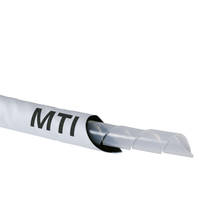

OTHER PRODUCTS



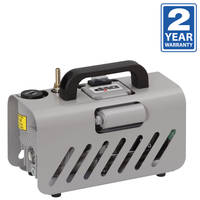

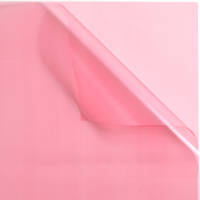
LAMINATE MATERIALS
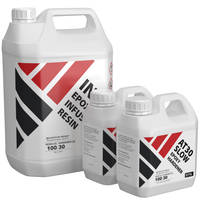
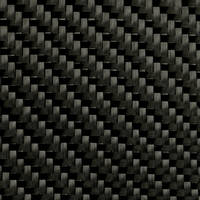
VIDEO TUTORIAL
Using Microporous Consumables in Resin Infusion
WHAT YOU WILL LEARN
In this video tutorial, we take a look at microporous technology for use in resin infusion, specifically MTI Hose® from DD-Compound, and our MVL™ and MVS™ microporous vacuum hose and strip.
The tutorial provides an introduction to microporous membrane products, explaining how they work, how to use them and demonstrating situations where they are most useful.
QUESTIONS ON MEMBRANE PRODUCTS FOR RESIN INFUSION
What are ‘microporous’ vacuum consumables and what are they used for?
Microporous resin infusion products are vacuum consumables which make use of a semi-permeable membrane to allow air to pass through the product, whilst providing a partial or complete barrier to resin. They are connected to the ‘vacuum’ side of the infusion and are used to ensure that an air path is maintained to all areas of the laminate which have not yet been infused with resin. Once resin does reach these areas, it does not pass through the membrane, overcoming the problem of resin being unnecessarily being drawn through the laminate whilst the farthest corners of the moulding fully infuse.
What is MTI Hose and how does it work?
MTI Hose is a microporous hose from DD-Compound designed to increase the reliability of a resin infusion setup by allowing a large perimeter of vacuum line to be established around the part, without creating a free-flowing channel that the resin will track down once it reaches part of the vacuum line. Put simply, it means you don’t need to worry about ensuring that the vacuum connector is positioned in the last place the resin will reach as the infusion completes; you can have a large perimeter of vacuum line and anywhere the resin meets it, it will stop flowing.
What is the difference between MTI Hose and MVL Hose?
MTI Hose and MVL Hose are essentially alternative grades of the same thing. MTI Hose is the market leading microporous hose and was developed specifically for resin infusion. MVL Hose is a lower cost equivalent of the same thing.
Compared to each other, the main difference between MTI Hose and the lower cost MVL Hose is that MTI Hose provides an almost perfect barrier to resin, whilst the MVL Hose will still allow a very small amount of resin to pass through its membrane. By not allowing any resin to pass through the membrane and into the vacuum line, MTI Hose prevents any resin being wasted by being drawn into the vacuum line. It is also a little easier to handle due to its softer, more flexible construction and a slightly easier sealing.
When are membrane products like MTI Hose beneficial in resin infusion?
Microporous, or 'semi-permeable' membrane consumables like MTI Hose are useful in larger, more complex resin infusion projects where it can be difficult to predict where the resin will reach last. They can also be very useful in maintaining vacuum to areas that would otherwise become isolated by resin flow, such as inside areas of core material where the resin will often track around the edge of the core and create a dry ‘island’ in the middle of the core, locked off from the vacuum.
Any resin infusion where you would normally choose to position multiple vacuum lines and then clamp them off sequentially as the resin reached them would be an obvious candidate for some kind of microporous product. Using MTI Hose or MVL Hose (or MVS Strip, when positioning directly onto the component laminate) in this situation would eliminate the need for multiple vacuum lines; the microporous product would ensure that vacuum was maintained to the very last place that the resin reaches, without starting to draw off resin in the places where it has reached.
How are microporous ‘membrane’ products used in resin infusion?
MTI Hose and MVL Hose are used in exactly the same way. When using either of these products, the initial infusion setup is the same as it would be if they weren’t being used, so the stack is reinforcement, peel-ply, infusion mesh, bag, with the MTI Hose used instead of the usual infusion connector as the vacuum side. The MTI Hose is usually placed directly onto infusion mesh but it would also be fine to end the mesh slightly short and position the hose onto directly the peel-ply.
There are no rules regarding the length of the MTI Hose and indeed it would be possible (although not particularly helpful) to run the hose around the entire perimeter of the infusion. More usually, the MTI Hose would be position around the second half of the infusion, especially extending into areas which you anticipate will be reached last by the infusion.
- The MTI Hose is connected to the vacuum hose at one end by sliding a length of the vacuum hose inside the MTI Hose.
- The outer membrane of the MTI Hose is then sealed to the vacuum hose using a wrap of sealant tape. This prevents resin circumventing the MTI membrane and finding its way into the vacuum line and so make sure you get good contact and a proper seal onto the outer membrane and the vacuum hose.
- The other end of the MTI Hose also needs to properly be sealed. Without a vacuum hose to seal to, this end should be sealed using a wrap of sealant tape, overhanging the end of the hose and pressed firmly to seal.
- Sealing the MVL Hose is done slightly differently: start with a small wrap of sealant tape placed inside the MVL Hose with half of the tape extending out of the end, press to seal the inside and then double the protruding tape back on itself to seal against the outside of the hose, press firmly, and then finish off with a strip of duct tape folded over the end and pressed firmly.
- The vacuum hose itself should breach the vacuum bag through the perimeter seal by wrapping a coil of sealant tape around the vacuum line and then pressing this tape firmly onto an exposed bit of the main bag seal.
The rest of the infusion process is run exactly the same as a regular infusion. For a general overview of resin infusion, see other resin infusion tutorials in our learning area.
MVS Microporous Vacuum Strip
MVS Strip works in the same way as the MTI/MVL Hose, the difference being that MVS is a flat format version, designed to be positioned directly onto the laminate without creating an indentation in the way that a tube format product, such as MTI Hose, would.
MVS Strip would be most commonly used in ‘outside in’ infusions, whereby the resin is fed into the laminate from the perimeter, with the vacuum line positioned in the centre of the laminate. Because the vacuum connection is on part of the finished component itself, it is important that the vacuum line creates minimum disturbance or impression on the laminate which is why the MVS Strip would be chosen over the tubular profile of an MTI Hose.
The methodology when connecting the MVS Strip to the vacuum line is similar to the hose-format products. One end of the strip is connected to the vacuum line and sealed, with the other end sealed closed on itself. Just as with the MTI Hose, it is very important that resin cannot circumvent the membrane by entering the strip through either end.
MVS Strip is connected to and sealed as follows:
- Position a resin infusion connector on the inside of the MVS Strip
- Push back some of the infusion mesh at one end of the strip and position a strip of sealant tape all the way across the width of the strip; position the tape so that it overhangs the end of the strip. Remove the backing and press firmly to seal the tape to the top film and the inside of the bottom membrane.
- Next, use a second strip of tape stuck to the outside of the bottom membrane, overhanging the end, and press to seal it against the protruding tape you positioned on the inside of the strip.
- A strip of duct tape can be wrapped over the end of the strip for additional security.
- Repeat the process to seal the other end of the strip.
- Once the vacuum bag is in place, the vacuum line is connected to the infusion connector inside the MVS Strip in the normal way. Use a knife to make an incision through the vacuum bag and the top film of the MVL Strip into the resin infusion connector.
- Push the vacuum hose through the bagging film and MVS film and firmly into the infusion connector before sealing in the normal way using sealant tape.
Can MTI Hose overcome a leaking bag?
A common misconception about microporous vacuum consumables, like MTI Hose, is that they can be used to negate the need for a vacuum bag to be perfectly sealed, but this is NOT the case.
The incorrect assumption is that when using a microporous product on the vacuum line, it would be possible to leave the vacuum pump running throughout the infusion and that the continued supply of vacuum would overcome a small leak in the bag and maintain pressure on the laminate whilst it cures. What actually happens is that once the resin meets the microporous membrane, it completely closes off the porosity of the membrane meaning that air can no longer pass through it. Once the part has fully infused, the MTI Hose (or other membrane product) will be completely locked off meaning that, although you could leave the vacuum pump running, it would be having no effect on the laminate or ability to overcome a leak. Air would gradually enter the sealed off bag, the vacuum pressure would fall and the part would still be severely compromised, just the same as it would without a microporous vacuum line.
Sorry everyone! You still need a perfectly sealed bag for proper resin infusion.
When wouldn’t you use MTI Hose or similar in resin infusion?
Given the advantages of including a microporous vacuum product, such as MTI, in a resin infusion, why wouldn’t they always be used? The answer actually is that there are very many situations where using MTI Hose or any other microporous product in a resin infusion wouldn’t offer any advantages and so would, in effect, just be adding unnecessary cost and waste.
Examples of where we generally wouldn’t use a microporous product in resin infusion:
- Simple infusions, from one side of a shape to another
- Infusions that you’ve run before and know where the resin will reach last
- Larger infusions which are still predictable in their resin flow
In all the examples above, the resin flow is known or is predictable. If you know where the resin will get to last, you can position your vacuum connector there and run the infusion without the need for additional consumables.
Additionally, a basic ‘resin brake’ configuration - where you include any area of peel-ply, without mesh, before the vacuum connector – will serve a similar function to a microporous product, maintaining an air path until the resin reaches it and then allowing only a very slow flow of resin through the peel-ply.
DISCUSSION (0)
Please share any questions or comments you may have about this video tutorial.
LEAVE A COMMENT OR QUESTION
USED IN THIS PROJECT
Although not necessarily an exhaustive list, the following tools and materials, supplied by Easy Composites, were used in this project.
The quantity shown below is the approximate amount used in the project rounded up to the nearest available kit size or quantity.
MICROPOROUS PRODUCTS



OTHER PRODUCTS






LAMINATE MATERIALS


DISCUSSION (0)
Please share any questions or comments you may have about this video tutorial.
LEAVE A COMMENT OR QUESTION
100% SECURE
PAYMENT METHODS


Easy Composites Ltd, registered in England 7486797. All content copyright (C) Easy Composites Ltd, 2025. All rights reserved.